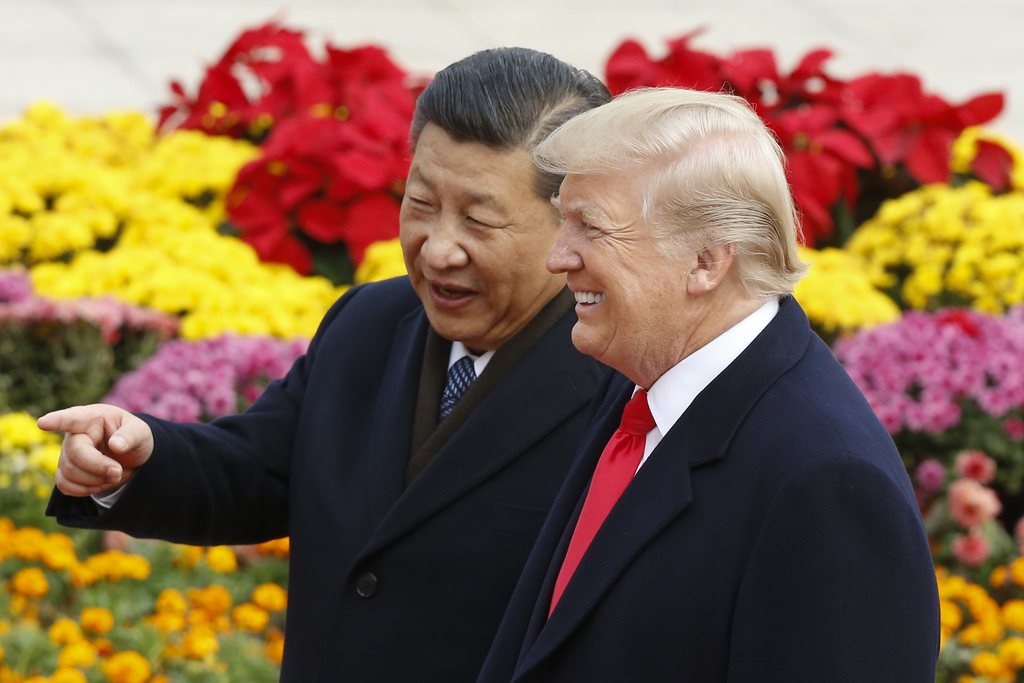As President Trump settles in for a long trade war with China, he ignores a far more serious crisis in China relations. At stake is not just the size of a trade deficit, but the future of America’s position as a superpower.
China has made clear its determination to lead the world in Artificial Intelligence by 2030 and to become the world’s sole AI superpower by 2050. To achieve these goals, China is aggressively investing tens of billions of dollars in future technology including robotics, surveillance, and data analysis. This state-controlled effort unites both the public and private sectors for a single purpose: world domination.
If this sounds overly alarmist, consider this: China is already ahead in the number of AI patents filed, AI venture capital invested, and research papers cited worldwide. The number of Chinese students studying AI and graduating from universities worldwide exceed the total number of other countries’ AI students combined.
The first paragraph of the country’s Artificial Intelligence Development Plan makes clear where the future lies: ‘AI has become a new focus of international competition. AI is a strategic technology that will lead in the future; the world’s major developed countries are taking the development of AI as a major strategy to enhance national competitiveness and protect national security.’
President Xi Jinping made clear at a meeting of China’s Politburo late last year that world domination was the primary goal of these technology investments. Meanwhile, China is pushing for new controls on the AI arms race, which is a clear threat that could lead to a new world war. For China, AI is an opportunity to create a step change in military capabilities while the US remains stuck enhancing legacy systems such as aircraft carriers and fighter aircraft.
Military planners in both America and China accept that AI makes war more likely. Autonomous systems may make a conflict waged by robots less costly in terms of human casualties. But autonomous systems also make conflict more likely, because AI rather than humans will decide the course and speed of war.
For example, nuclear Armageddon has always been predicted on the premise that when one nuclear superpower launches a first strike, it will take around 20 minutes for an ICBM to reach its target. This would allow the president enough time to enter the launch codes for a massive retaliatory strike. This paradigm of Mutually Assured Destruction (MAD) has prevented nuclear war for half a century. However, today’s hypersonic missiles reduce the time from launch to detonation to around five minutes, making the time available for a human response too short. Enter AI, a solution that takes the human out of the equation.
China’s military and political leaders routinely say that by 2025 autonomous weapons will run the battlefield with minimal human engagement. By contrast, the Pentagon claims that for the foreseeable future, humans will always be in the chain of command to control the machines. Today’s military planners, including many in the Pentagon itself, view this claim as laughably unrealistic.
The Chinese government gathers, translates, and disseminates to the public and private sectors all recent research developments and think tank publications, to ensure that China’s industry and national security establishment are always up to date. There is no similar American effort, and no collective knowledge in the public and private sectors of what is going on in China. This information gap has led to a dangerous complacency in and out of the American government about the pace and strategic course of the AI revolution.
Aside from culling publicly available data, the Chinese government engages in the largest covert spying effort ever seen. For many years, China’s intelligence organizations have specifically targeted companies, universities, and research centers. Spies are routinely infiltrated, and cyber attacks routinely penetrate and steal highly sensitive technology secrets.
What makes China so effective is that there is no barrier between the public and private sectors. A secret stolen by China’s People’s Liberation Army will be immediately shared with the relevant private sector companies. By contrast, there is no mechanism for America’s National Security Agency to share anything with the private sector. Indeed, little of the NSA or CIA’s spying would help American competitiveness in any field. For more than twenty years, the intelligence community has wrestled with the challenge of protecting secrets while, at the same time, finding ways of sharing timely and valuable intelligence with the private sector. The debate has been slow in part because agencies like the CIA and NSA cannot get past the legacy of the Cold War, when the government was what mattered, and not a meaningful relationship that serves the whole nation.
America is losing the AI and technology arms race, and that matters in strategic terms. Since World War Two, America has been the sole superpower, a bastion of intellectual and political freedom, and a supporter of democracy and the rule of law across the globe. China is the very antithesis of everything America stands for.
The Communist party has established the most pervasive surveillance state ever seen. In an operation codenamed Sharp Eyes, 200 million cameras (450 million by the end of next year) record the movements of millions of citizens. Each citizen is identified through facial and gesture recognition technology. This information is combined data on every citizen to create a social credit score that decides who can buy a house, get a job promotion, or move from one city to another. There is no appeal against a low credit score, no redress for an AI decision that impacts a family’s future, and zero accountability for a process controlling a population of 1.4 billion people.
Just how this system works can be seen in the western province of Xinjiang. The oppression of the Uighur Muslim minority has involved the aggressive use of surveillance to identify and then imprison more than one million people in ‘indoctrination’ camps.
Eighteen countries so far have received exports of China’s surveillance technology. Thirty-six governments have been trained in how best to control their populations. Every piece of surveillance technology exported by China has a ‘backdoor’ which will allow China to gather intelligence on tens of millions of foreign citizens. This information can be used to control other countries politically and economically. For example, the US government has a large quantity of intelligence, both human and technical, that suggests Huawei, the vast Chinese technology firm, has built backdoors and intelligence gathering software into many of its products. As Huawei is perhaps the world’s leader in 5G technology, this could mean big trouble for every country, including Britain, that allows Huawei products into its technology backbone.
The intelligence community has tried to raise the alarm over China’s long-term plans, but it has proved impossible to get anyone in the White House to pay attention. Instead, the administration remains obsessed by the latest tweet storm, or the president’s rants about the ‘fake media’. There appears to be no interest in America’s future role in the world – a lack of interest that China clearly understands and is exploiting.
The response of the Trump administration to these developments? No strategic plan. No new initiatives. No effort to unite the public and private sectors behind any coherent vision. Instead, America seems content to hand control of the pace and direction of the AI revolution to a state that operates in ways directly opposed to American values and objectives. If the current course and pace of change continues, America will no longer be the dominant superpower. Instead, China, the global AI hegemon, will decide the future of our world.


















